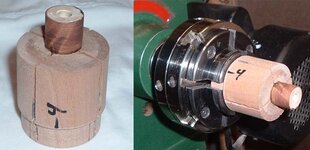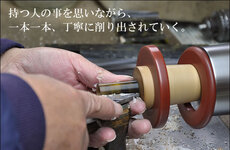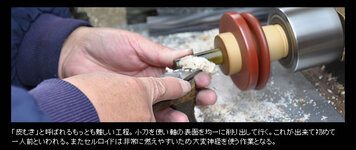Dale Allen
Member
I have a small set of jaws for my cheap PSI chuck but after much use they are getting way out of alignment. So, I was thinking of this method I saw using a split chuck. The one I remember was plastic and not used for drilling blanks.
Anyway, I was hoping the jaws would put enough compression on the blank but it tends to slip. Now, I need some kind of clamp. I'm not keen on the idea of a worm drive hose clamp as that would set the balance off. I suppose I could use 2 of them and maintain balance. Any other ideas?
This thing runs very true. Even made out of a piece of cherry, it varies only about .004" when turning. A trial run with this round blank measured real close but since it was spinning in the jaw it was difficult to get a good complete hole.
Thanks all.
Anyway, I was hoping the jaws would put enough compression on the blank but it tends to slip. Now, I need some kind of clamp. I'm not keen on the idea of a worm drive hose clamp as that would set the balance off. I suppose I could use 2 of them and maintain balance. Any other ideas?
This thing runs very true. Even made out of a piece of cherry, it varies only about .004" when turning. A trial run with this round blank measured real close but since it was spinning in the jaw it was difficult to get a good complete hole.
Thanks all.



